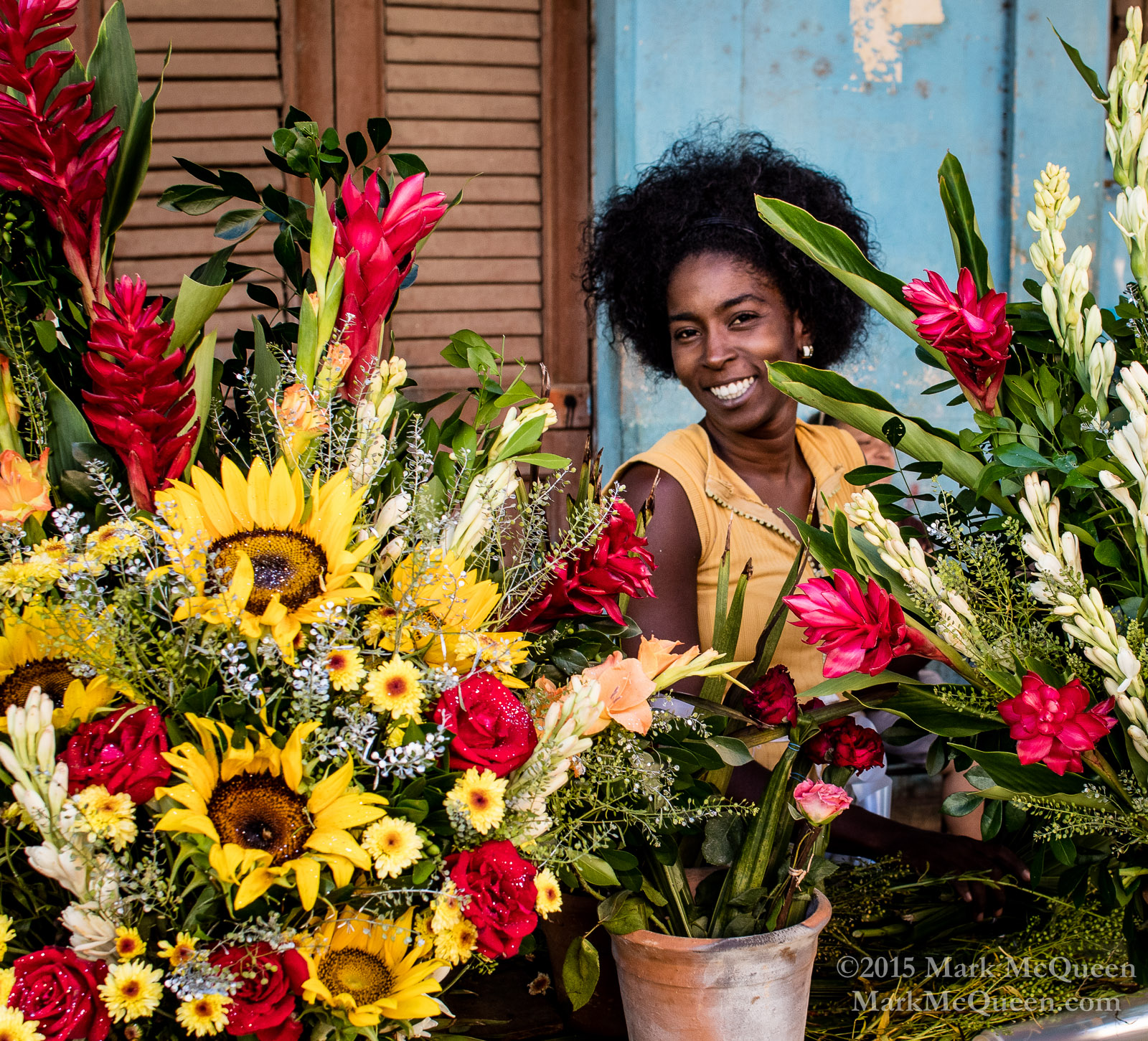November, 2015
Just back from Cuba and a week of wandering around Havana, taking photos and trying to talk to locals. For tourists, Cuba’s grand old hotels (in various stages of decline), legendary jazz clubs, numerous squares with original Spanish colonial architecture, countless tiny souvenir shops, and year-round summer weather provide a lot to like in a vacation. And those CARS…
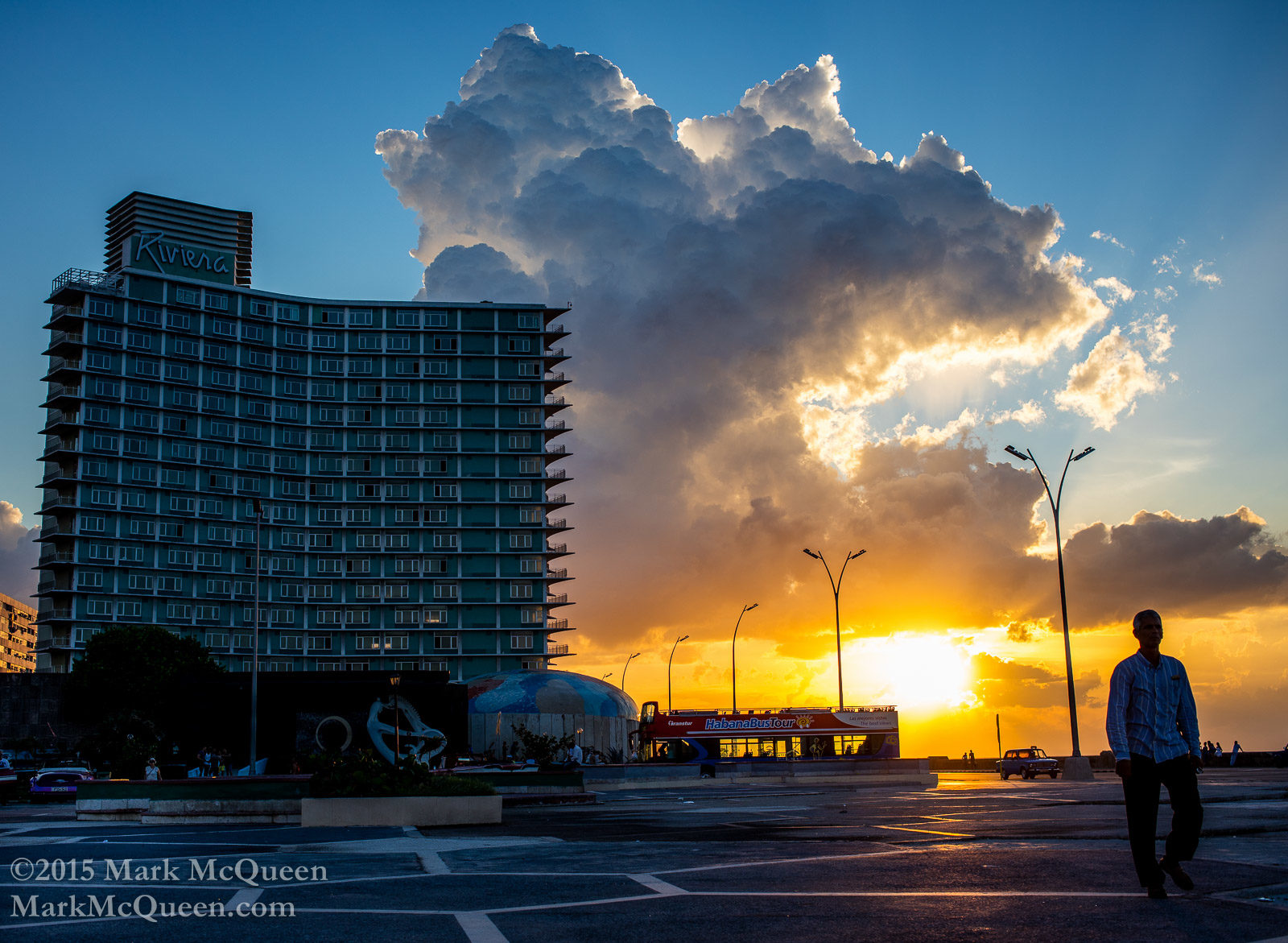
Some tourist hotels in Havana are suddenly being reserved for Americans, making it harder for Europeans to get rooms 
Hotel Nacional is showing its age, but is still grand. 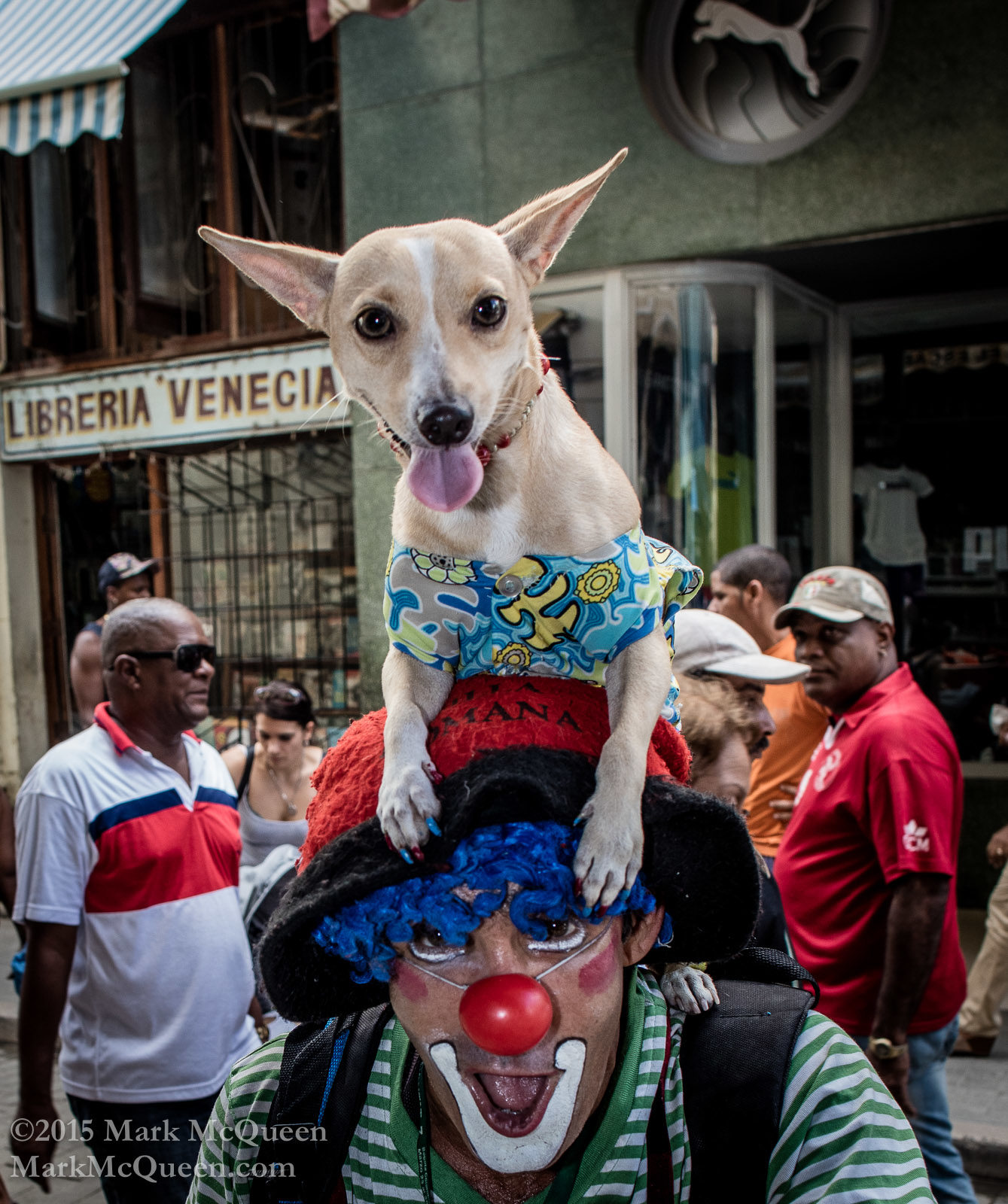
Even some dogs are involved in the bourgeoning touri9st industry in Cuba 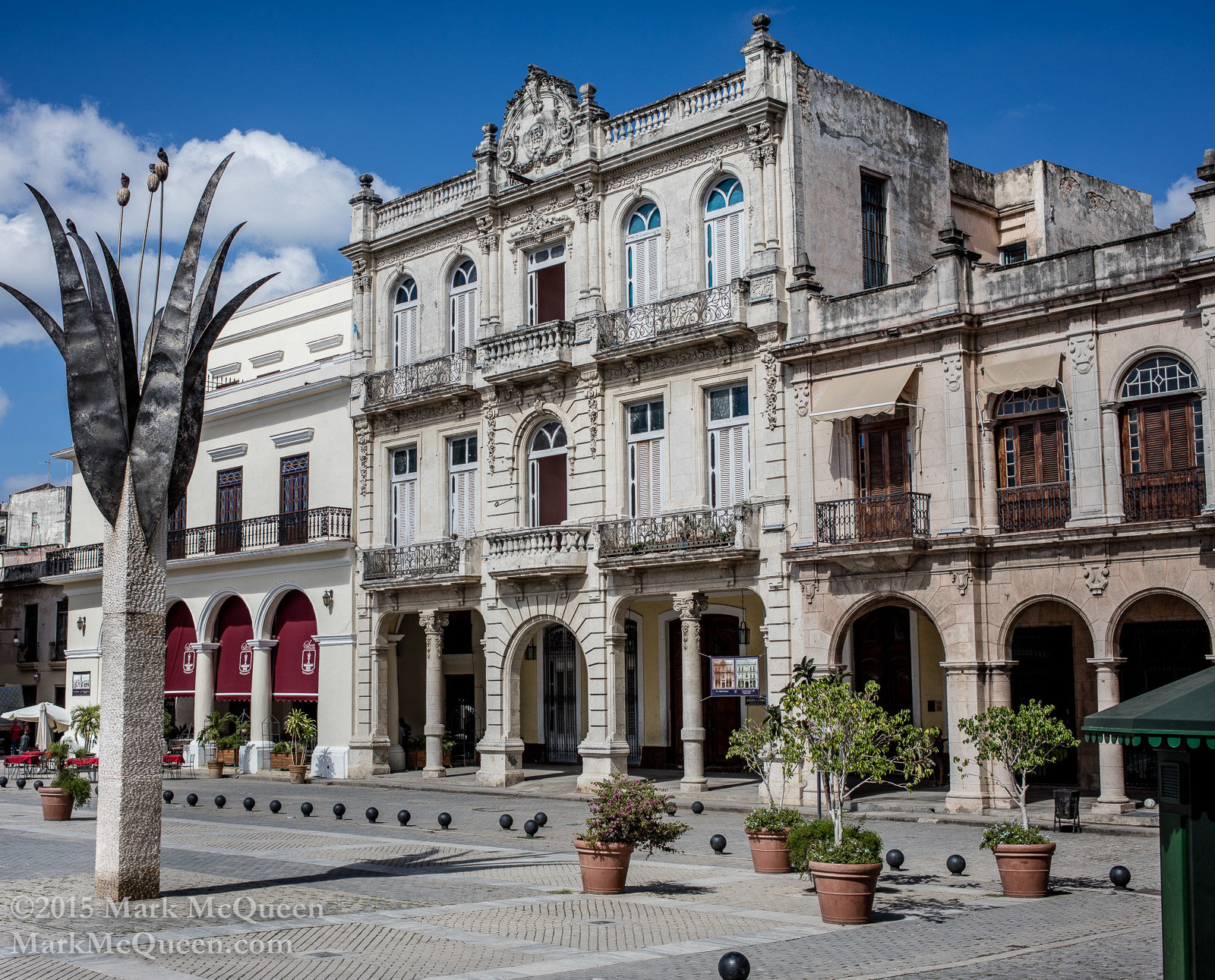
Many public squares in Havana are lined with beautiful Spanish colonial architecture, recently restored with the help of UNESCO 
The cash-starved government of Cuba is welcoming an influx of tourism that may bring unintended consequences. 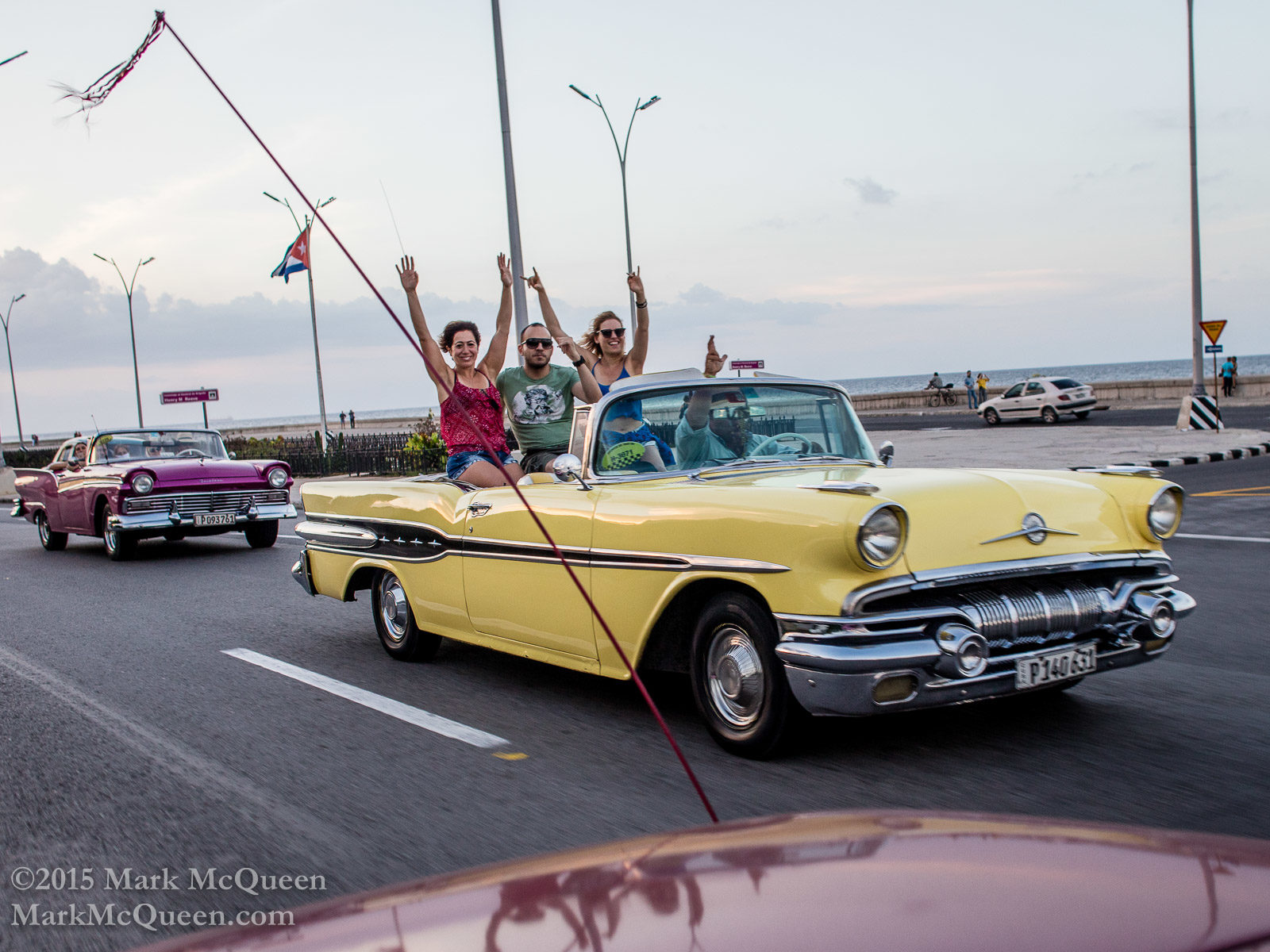
Riding classic cars on the famous Malecón is an essential to-do in Havana. 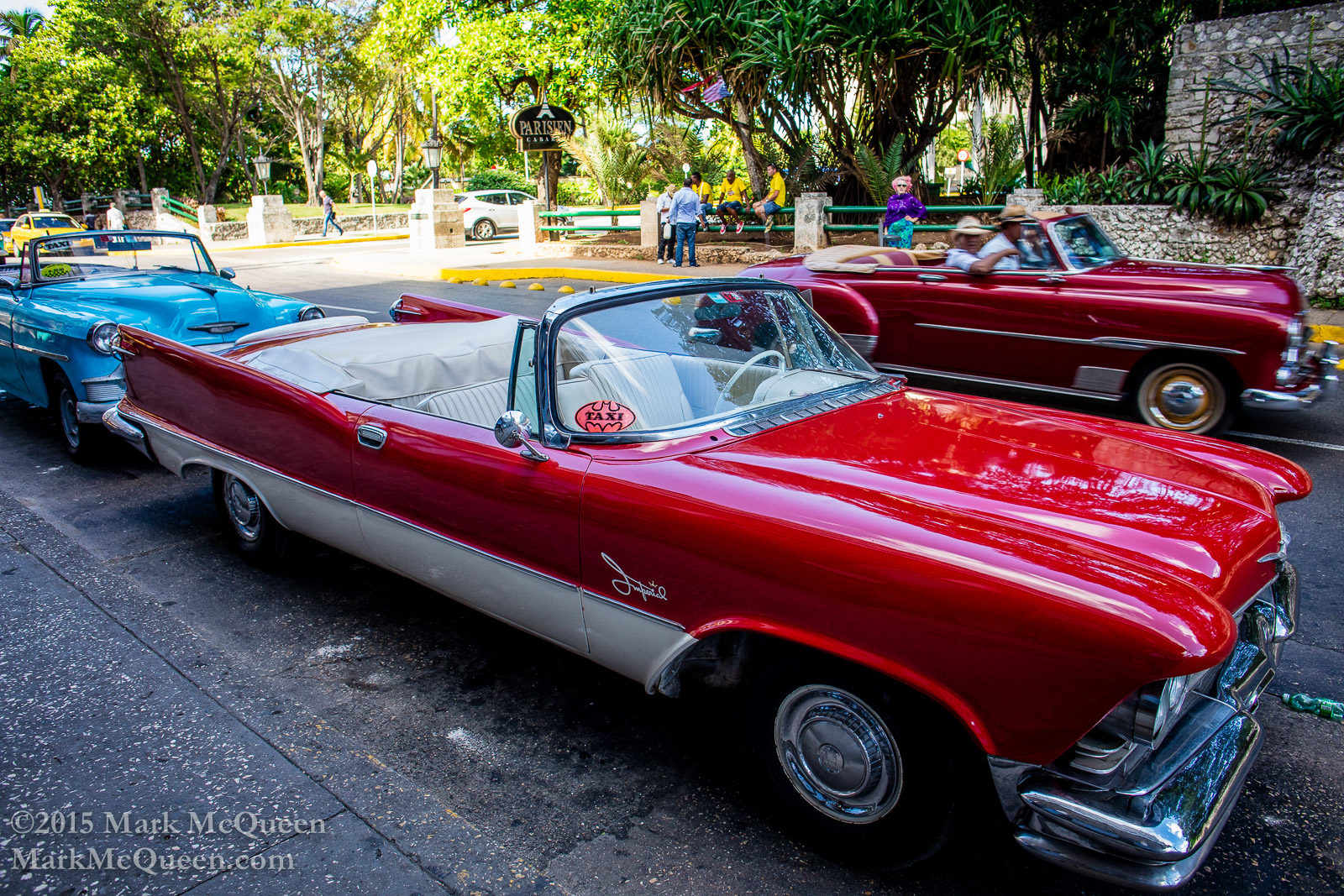
Havana is like a huge classic car museum. The nicest ones serve tourists exclusively. 
Most of the big tourist hotels, like the Havana Libre, are in the Vedado neighborhood, which is a little more upscale than Vieja & Centro. 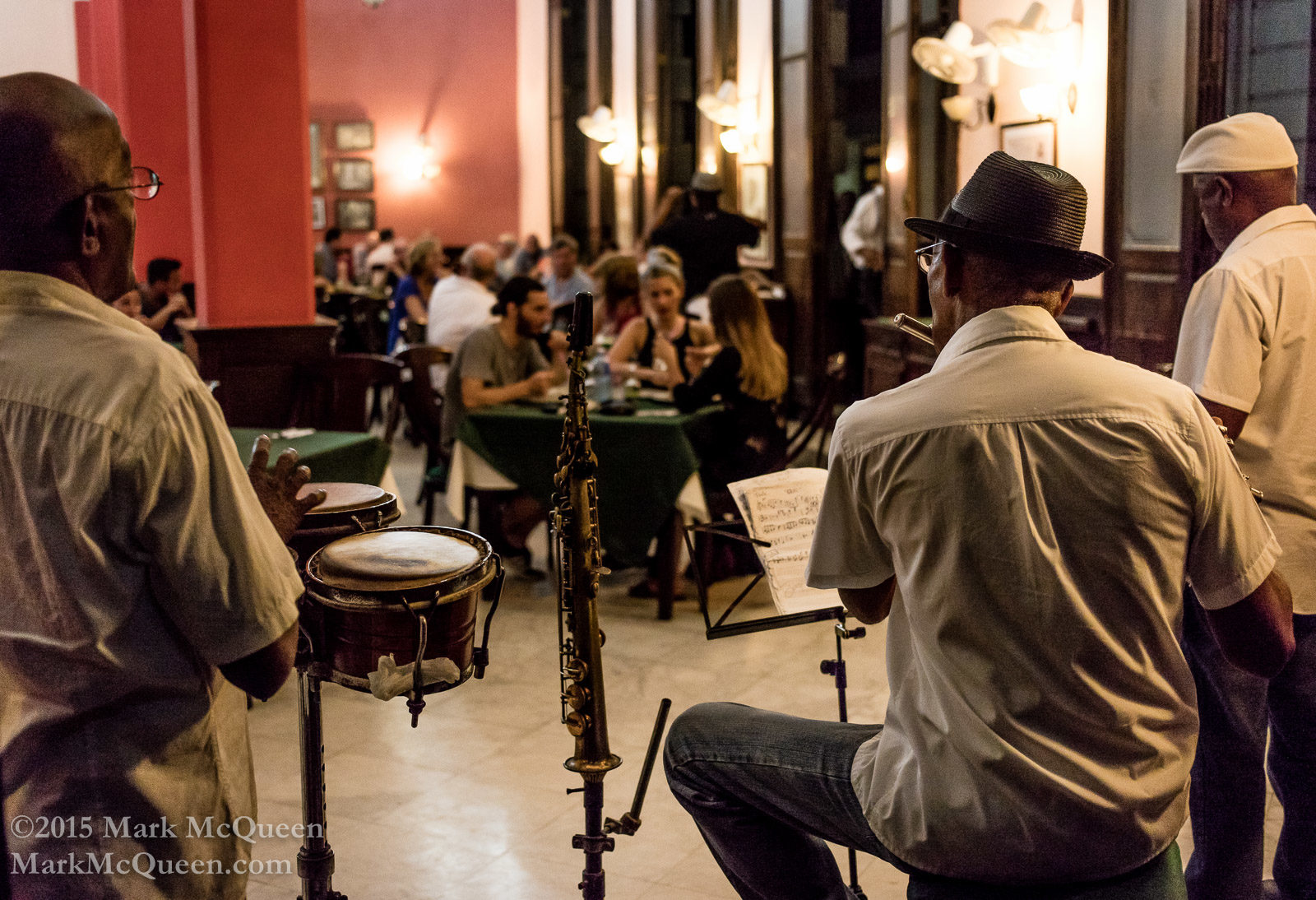
Havana is a very musical city. If you’re at a restaurant or club in Vieja (old city) without live music but with outdoor seating, wandering musicians are sure to stop and play for tips while you eat. without live music but with outdoor seating, wandering musicians are sure to stop and play for tips while you eat. 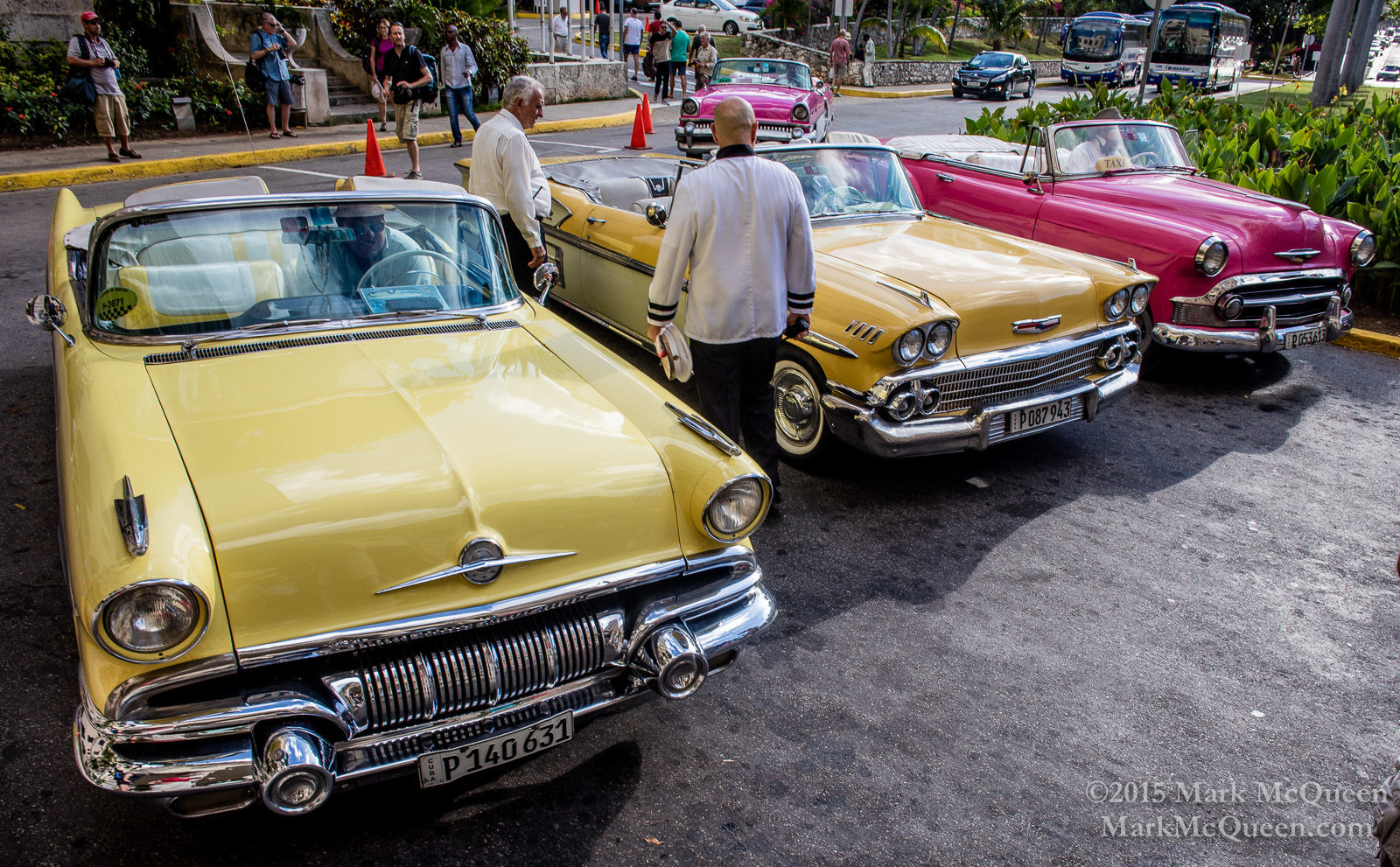
They call these classic cars ‘Chebbies’, no matter what make or model. 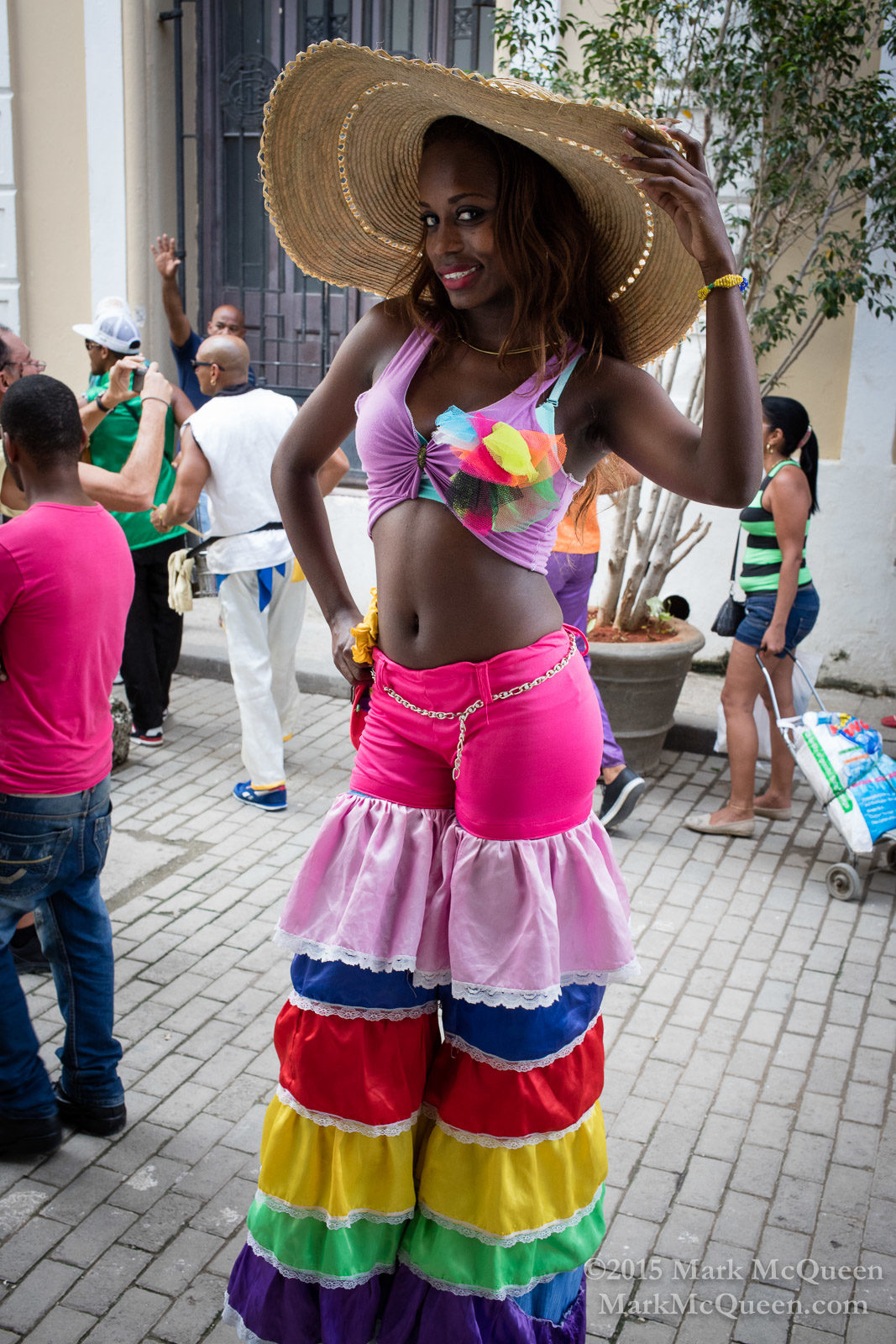
A few Cubans are now making more money in a day from tourists than most make in a month 
Some of these cars are well over 50 years old, yet look like new. Most original engines have been replaced with deisels. 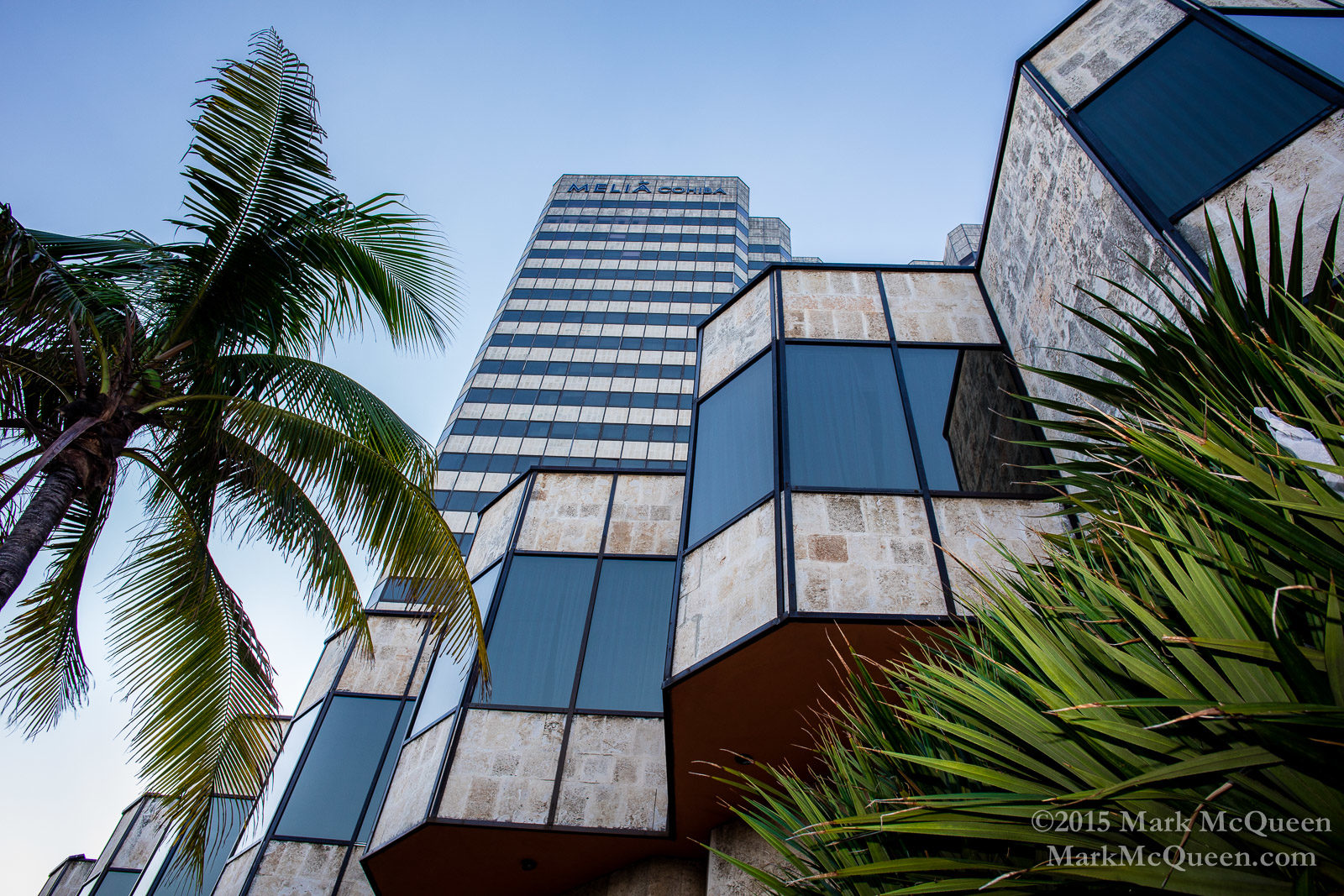
The Melia Cohiba, one of many huge tourist hotels in Havana 
Many public squares in Havana are lined with beautiful Spanish colonial architecture, recently restored with the help of UNESCO
But we were more interested in the real Cuba. As in most Caribbean countries, it’s very different from the one most tourists see. In Castro’s Cuba, the dichotomy is astonishing.
Locals even use a separate currency, and while visitors can exchange their money for “moneda nacional”, they’ll have to venture out of tourist land in order to spend it. Once in the real Havana, though, some rare treats await. Like ice-cold, fresh-squeezed “guajava” (guava) juice served in a (glass) glass for about 7¢. Or my favorite, guarapo, made by squeezing raw sugar cane. For less than 30¢ you can have a great ham and cheese sandwich, sometimes with chorizo added. These are served on the sidewalk through windows from smiling vendors in tiny rooms, sometimes just big enough for a small refrigerator, hot plate & sink.

In much of the Centro and Vedado neighborhoods, locals are happy to smile for a photograph without asking for money. But give them something! A negligible amount for an American can feed a Cuban for days. 
Independent merchants serve a variety of fresh food and wares through their windows. 
The capitol building, modeled after Washington’s, undergoes restoration while apartments everywhere fade and deteriorate. 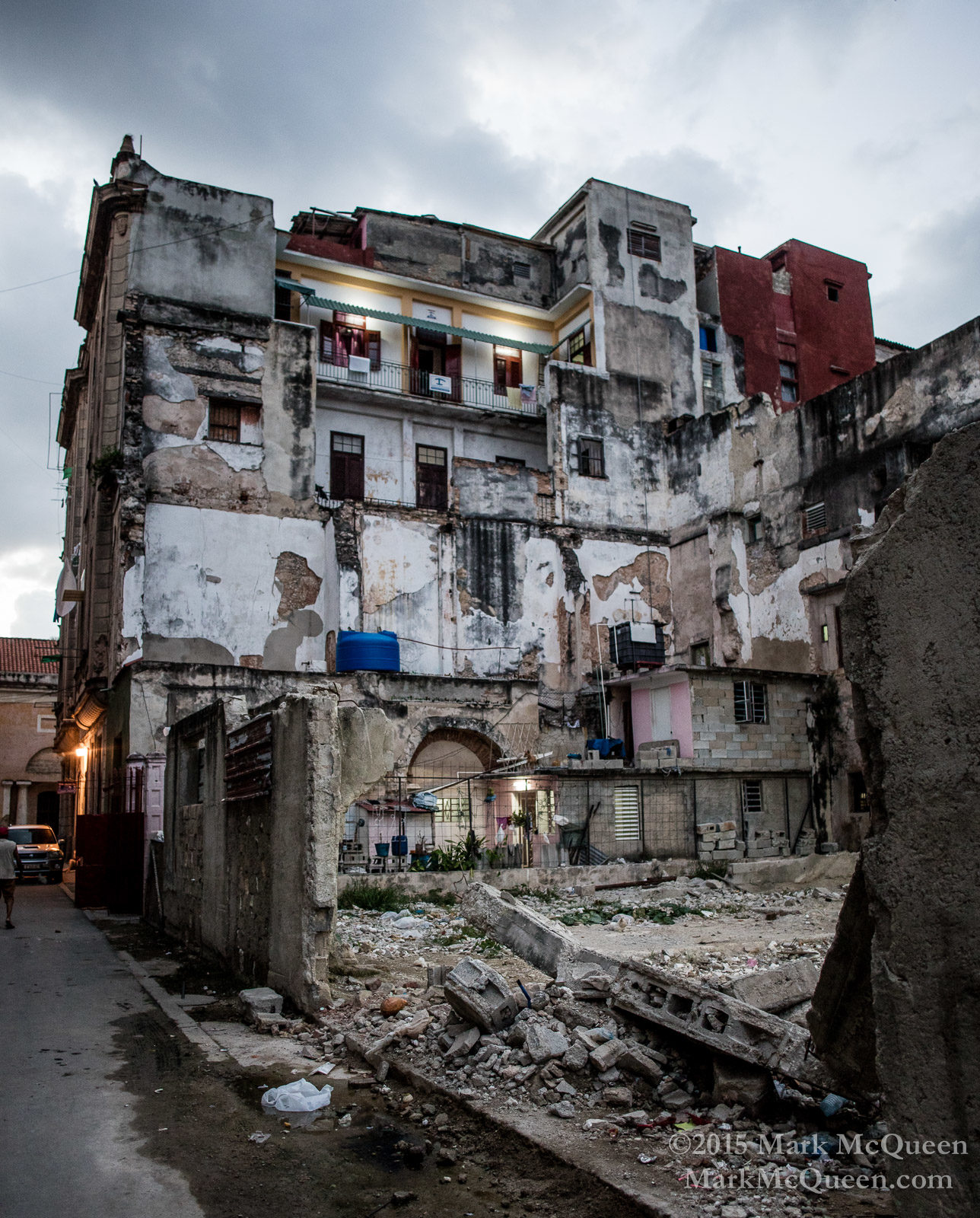
Devastation is everywhere in Vieja and Centro. Some partially collapsed buildings are still occupied. 
Not a lot of middlemen in this market. 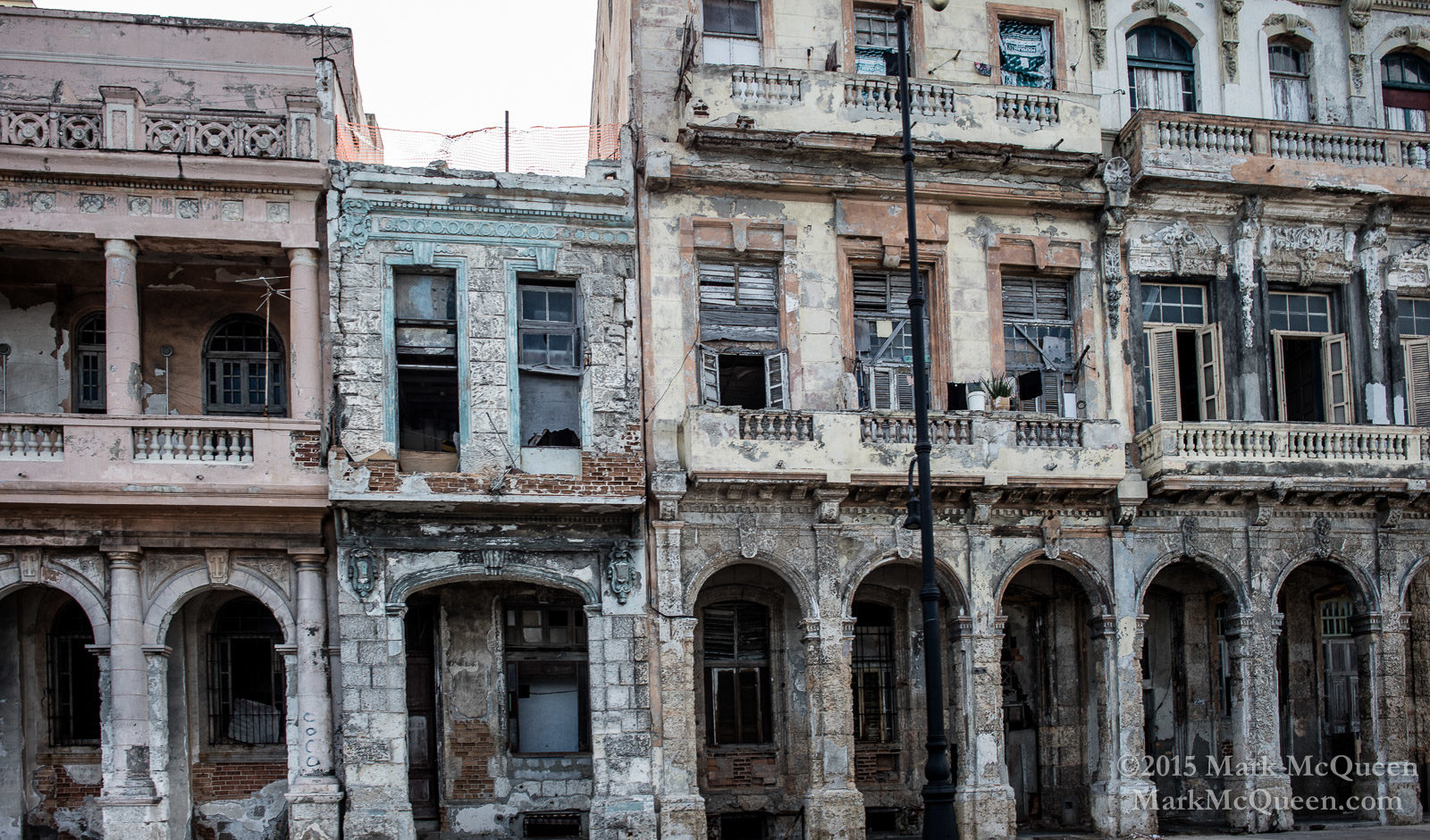
Some of the worst devastation is along the famous Malecone: miles of real estate facing the Caribbean, now derilect and abandoned. 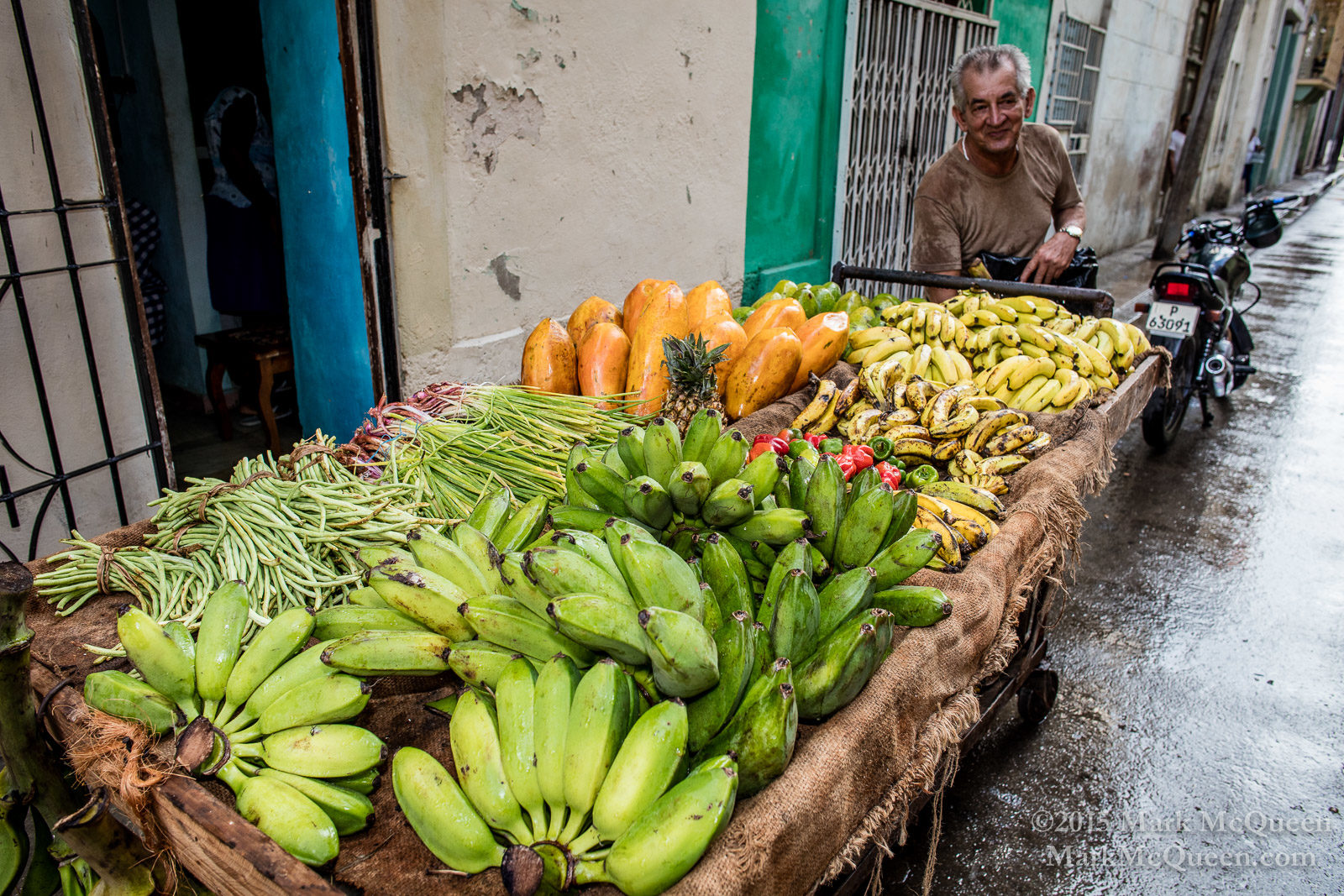
Since the “special period”, most of Havana’s food is locally grown, and entirely organic. 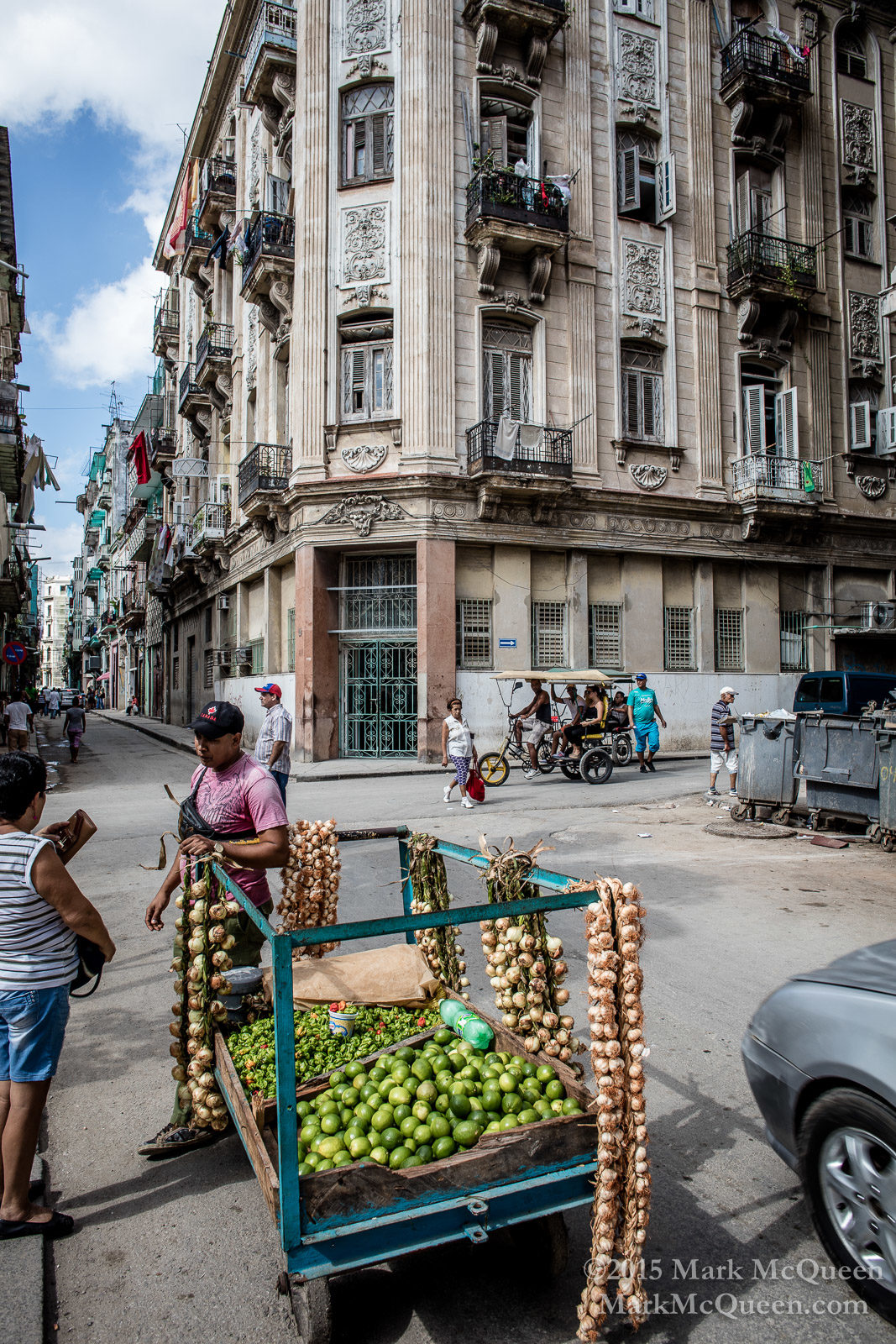
Produce is still somewhat limited in Cuba, and comes mostly from street vendors like this one, farmer’s markets, and a few supermarkets. 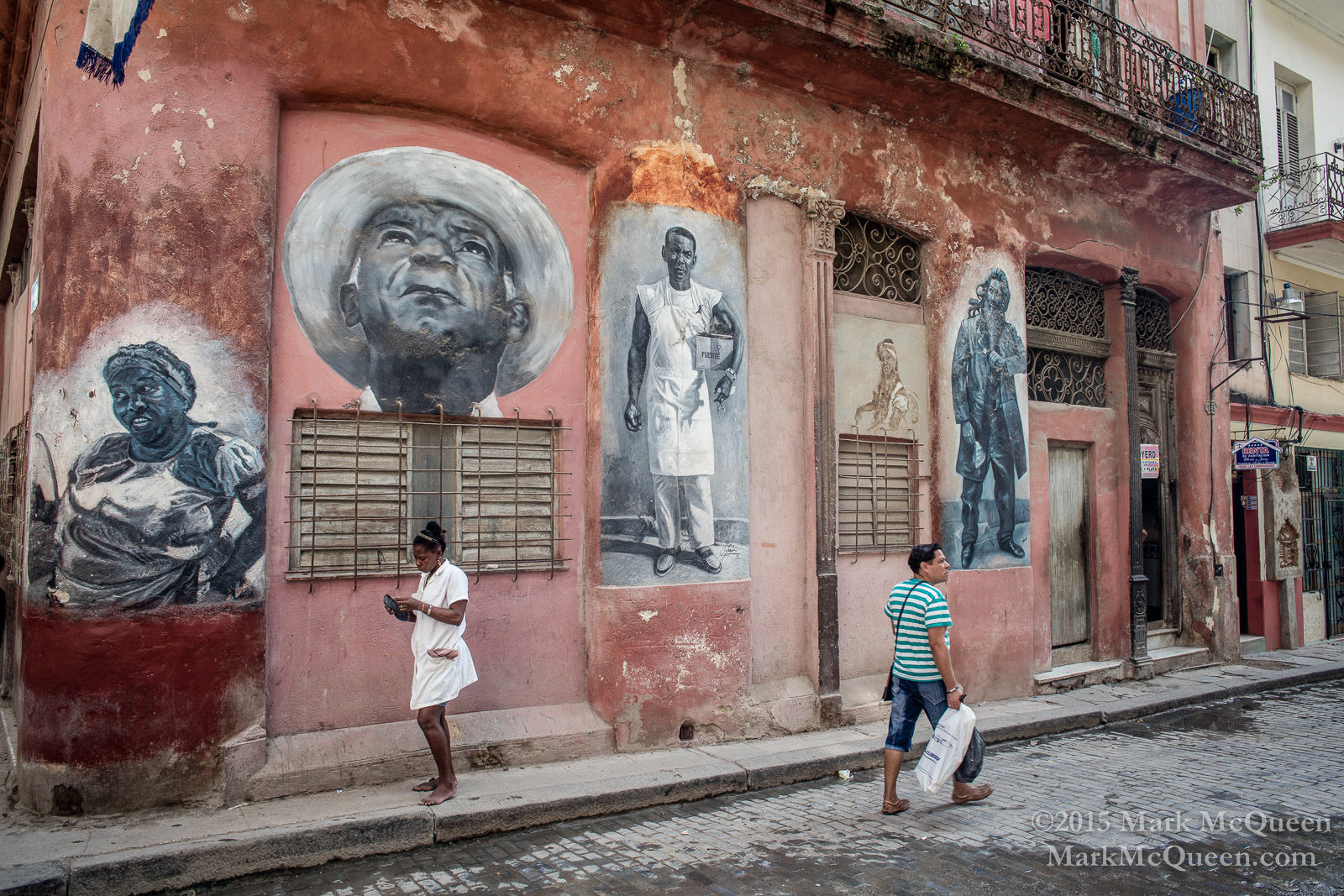
Street art and graffiti are everywhere. Most of the art glorifies labor and the revolution. Che Guavera is everywhere. 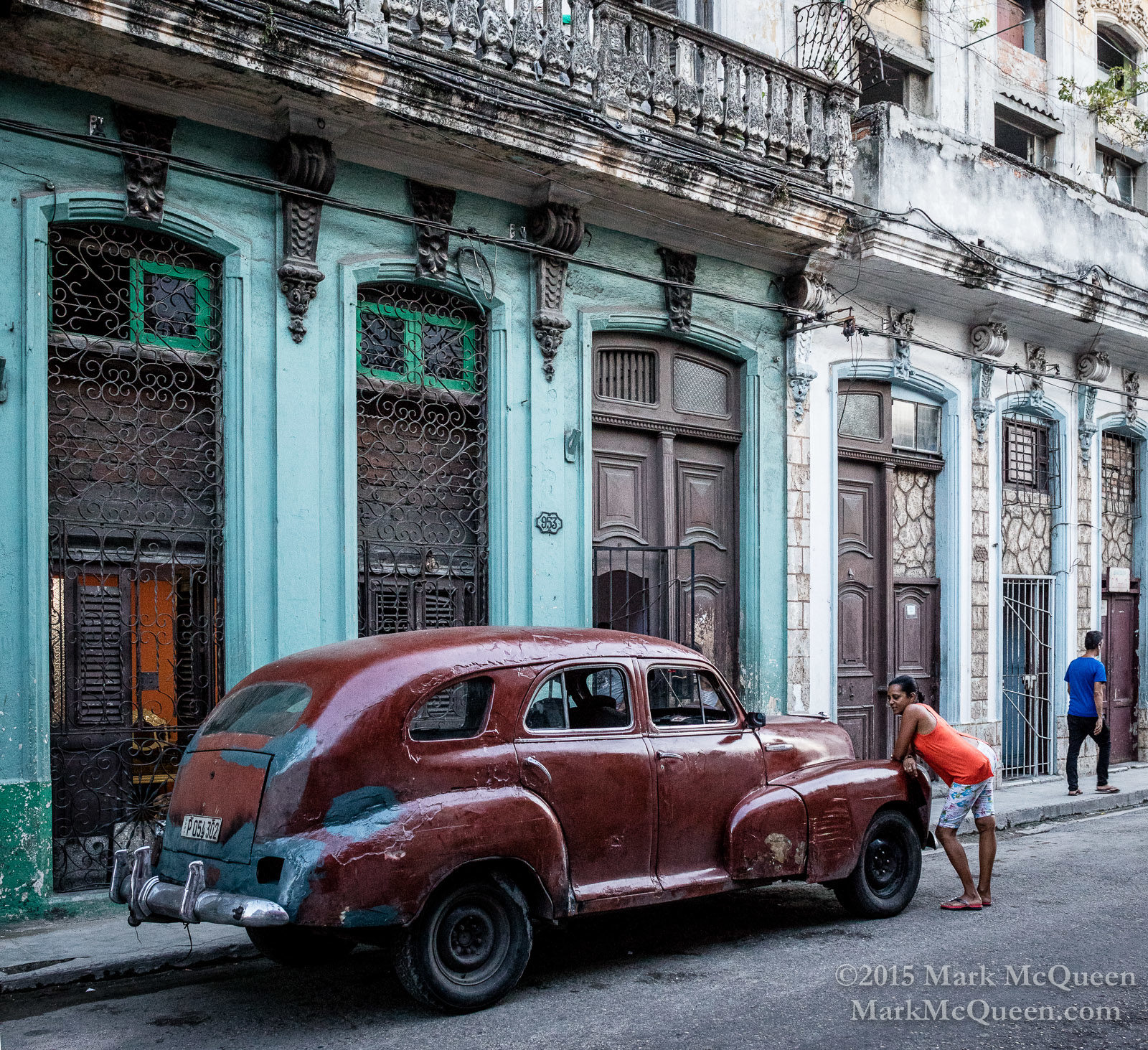
Cars and buildings are patched and repaired with any materials available, yielding varying results. 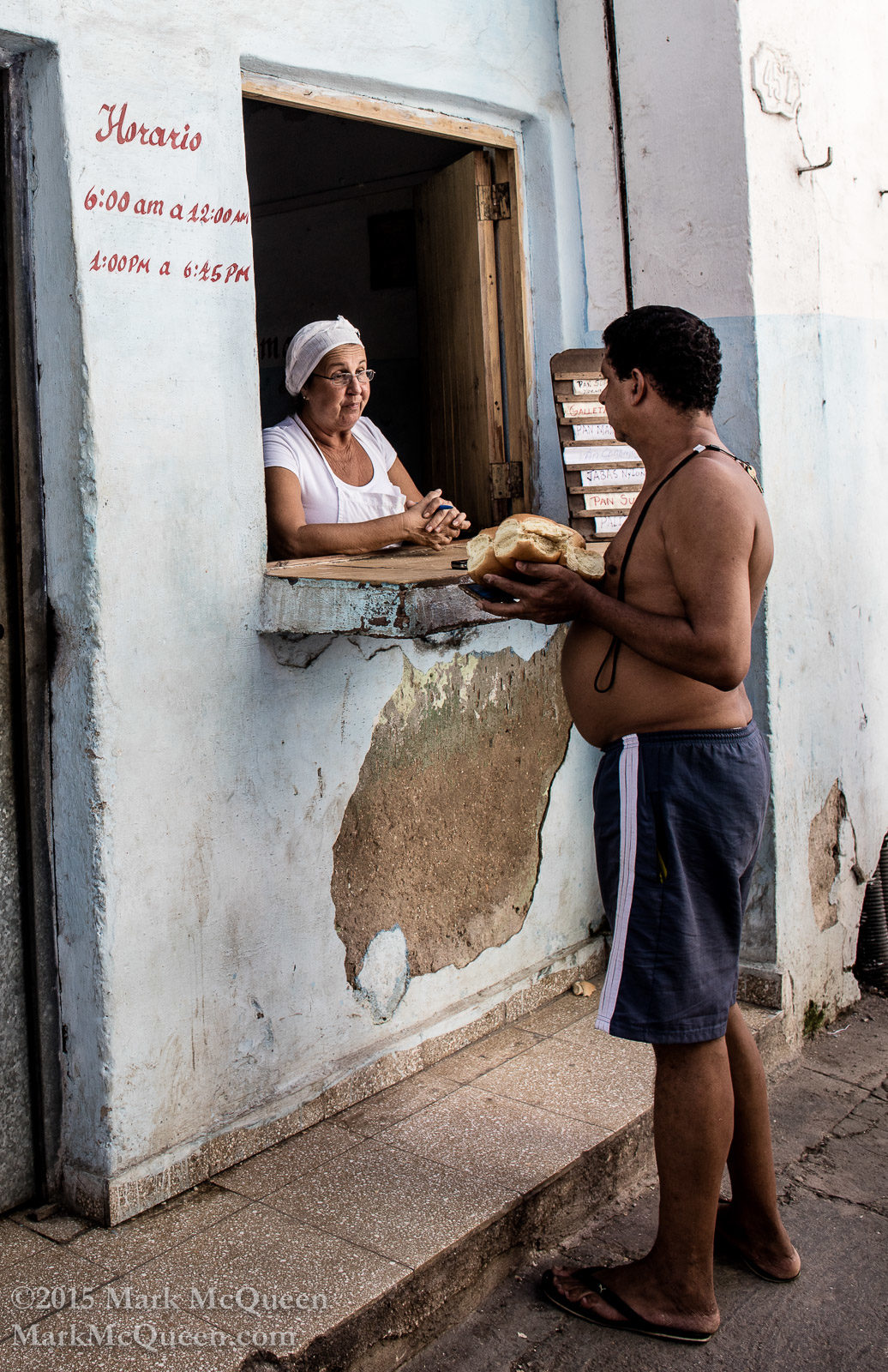
A local bakery in the Centro neighborhood 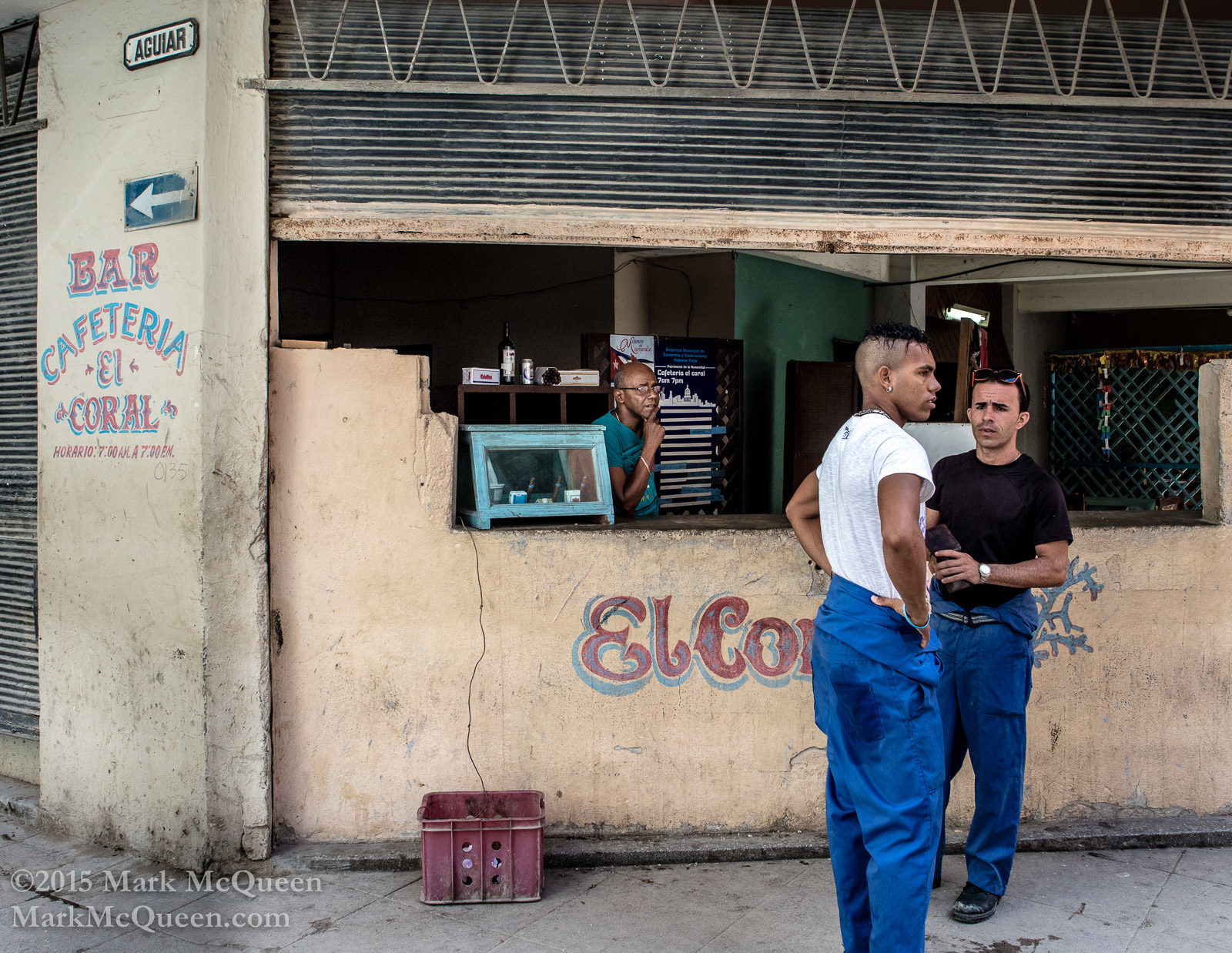
Local bars are not cheerful places, but serve very cheap beer, which you can drink on the street. 
There are many kinds of taxis in havana, from classic cars to Pedicabs 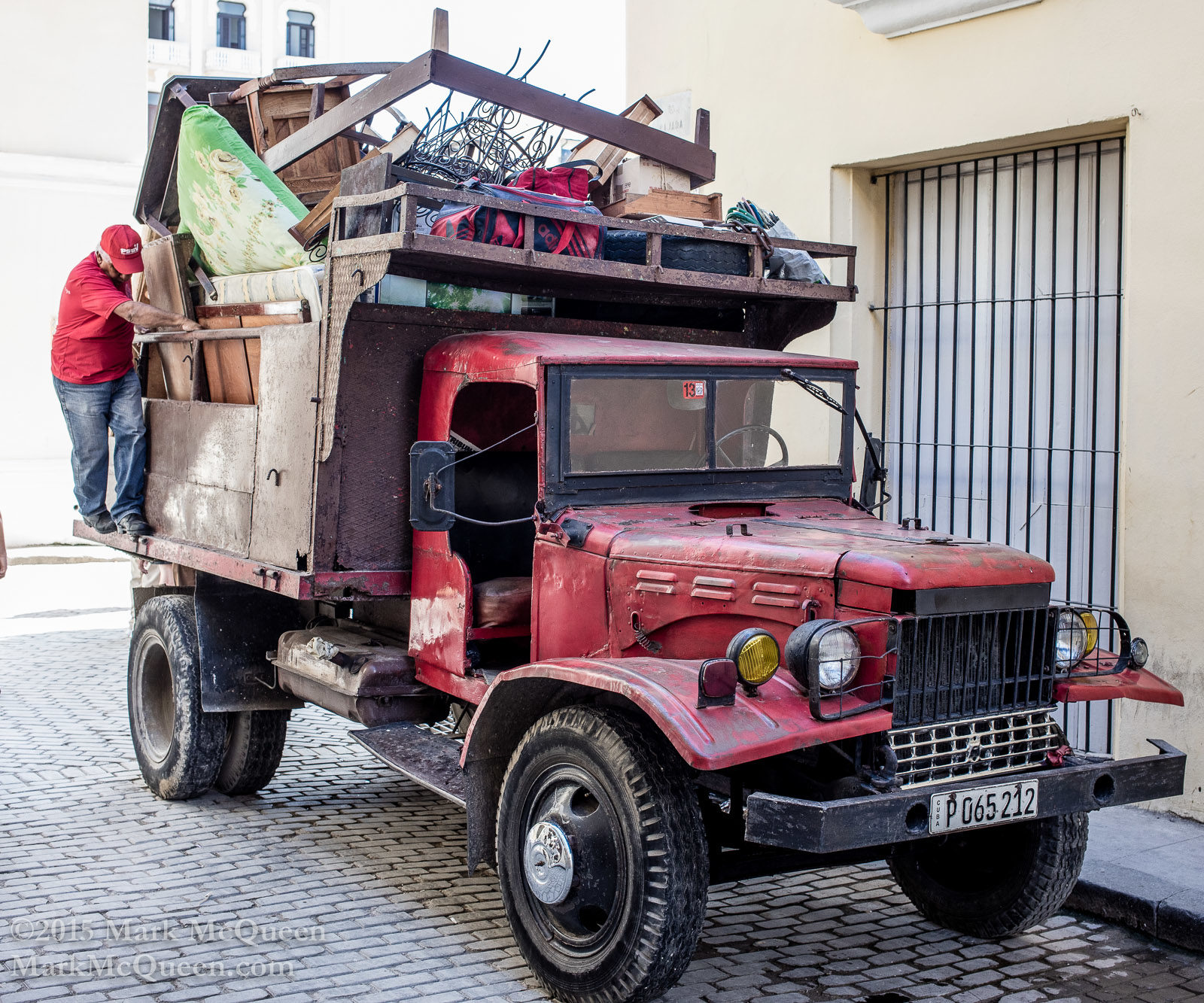
Nothing is wasted, and there’s almost no trash on the streets, thanks to an army of street cleaners. 
The entire city of Havana seems to be crumbling under the crushing weight of bureaucracy and poverty 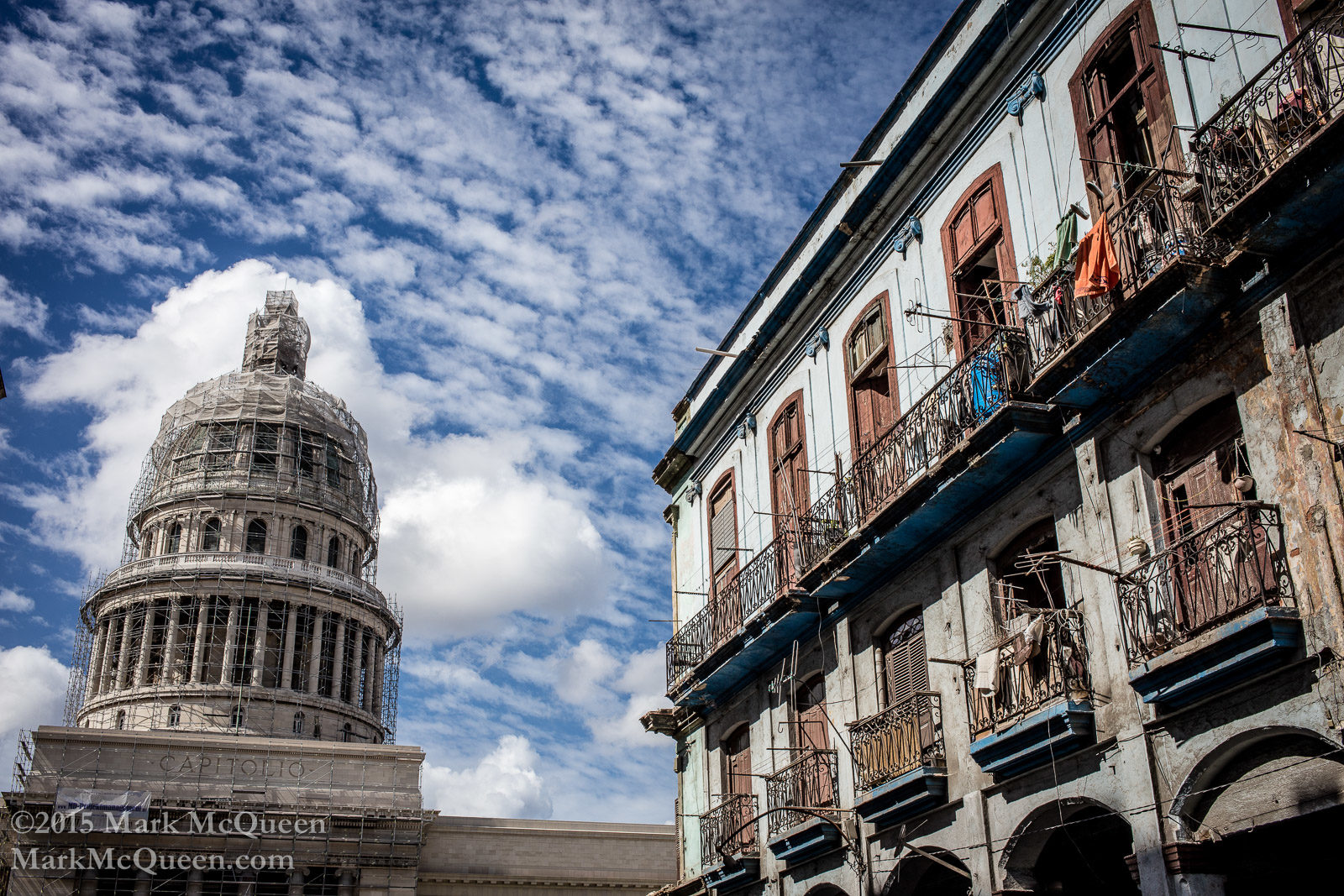
The capitol building, modeled after Washington’s, undergoes restoration while apartments everywhere fade and deteriorate. 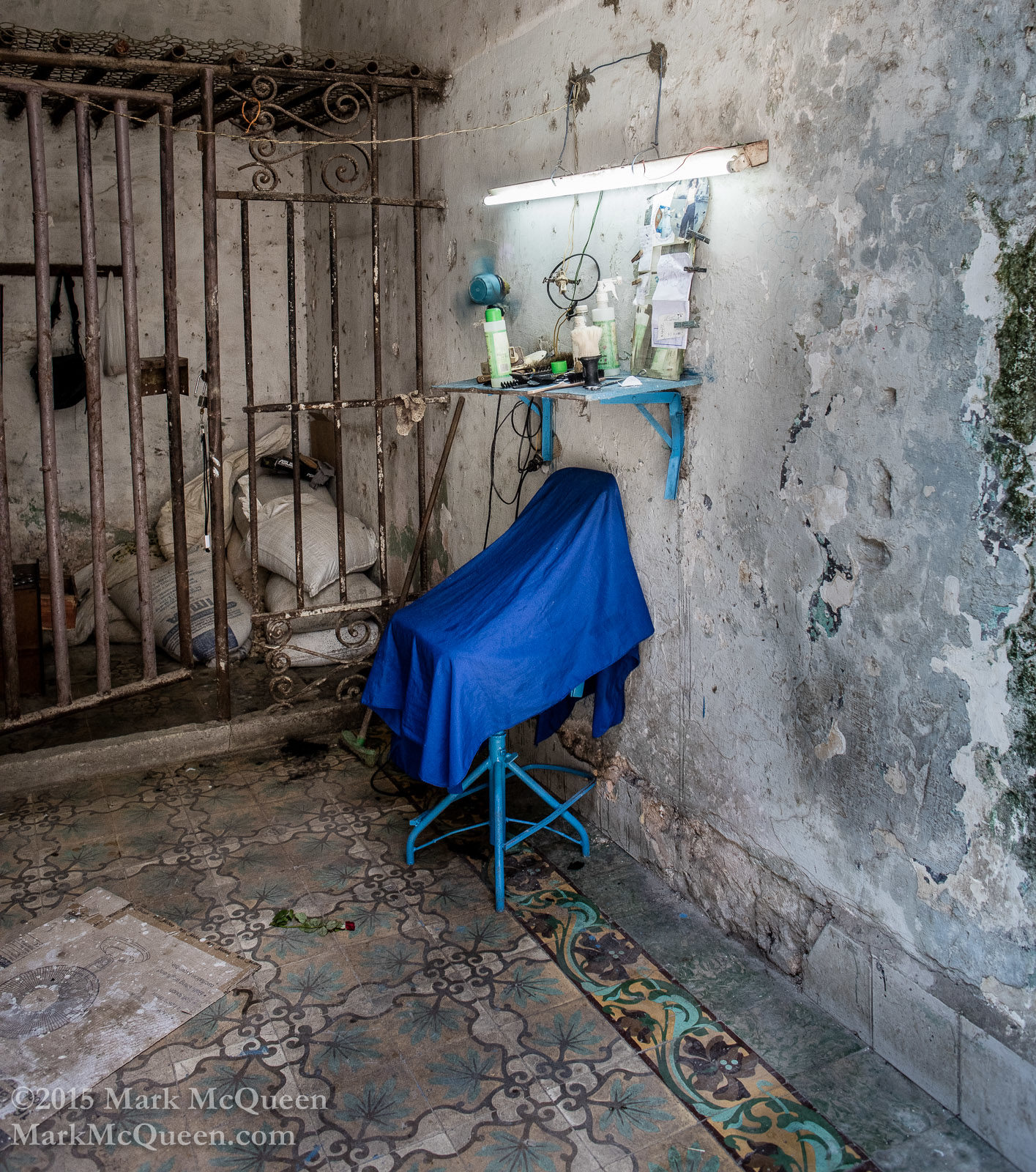
I could be wrong but I believe this serves as a barbershop 
Huge, cavernous ruins of once-glorious buildings dot the landscape of Havana. 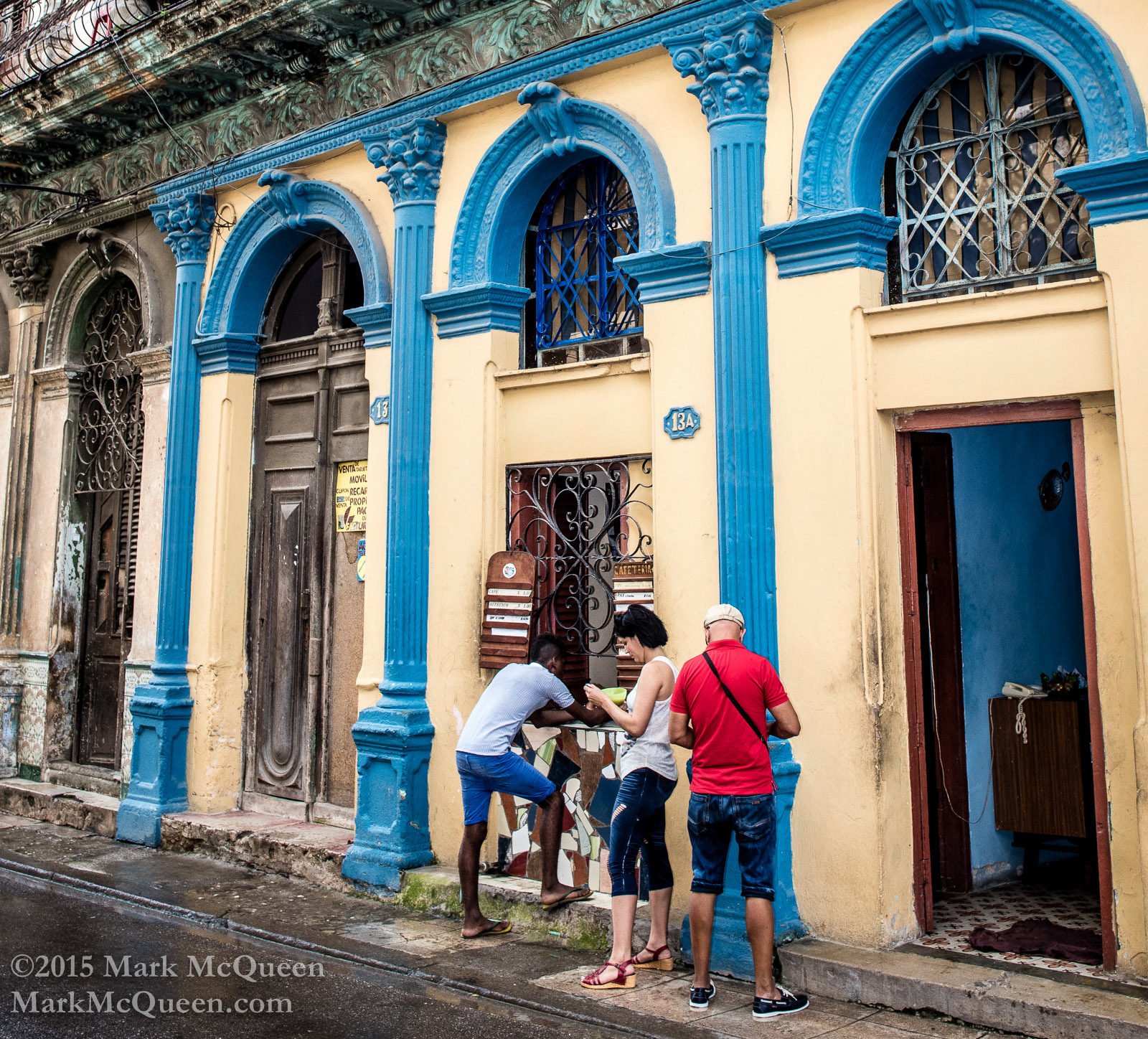
Vendors sell delicious fresh juice, sandwiches doughnuts and more from tiny windows all over Havana 
Fresh off the boat, these fish will go to the first taker that offers enough money. 
The thousands of classic cars in Havana require constant upkeep. This is a common scene all over Havana.
The entire city is filled with once-magnificent architecture, now crumbling under the weight of years of poverty. In the 90’s, after the loss of Soviet sponsorship, Cuba experienced what they refer to as “the special period”, when the country lost 80% of its exports and imports. During this time, food consumption was reduced to a fifth of previous levels, and the average Cuban lost 20 pounds. Entire areas of Havana had no running water for years.
The long term effects of crushing poverty are evident in the entire city outside the areas where tourism and UNESCO have poured money into restoration, or in government centers. It’s hard to imagine what a lush, fabulous city this once was.
For a unique look at the dogs and cats of Havana, visit phoDOGraphy.com
